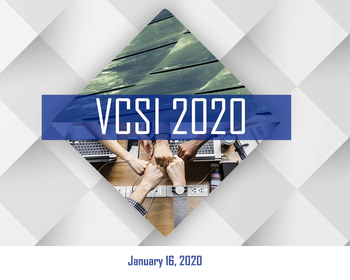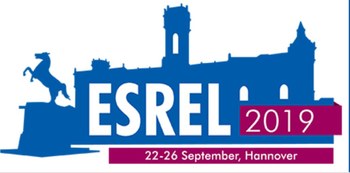
The study and design of cyclically loaded structures cannot neglect the evaluation of their fatigue behavior. Today numerical prediction tools allow adopting, in various industrial fields, refined and consolidated procedures for the assessment of cracked parts through analyses based on fracture mechanics. An high level of detail can be obtained through the use of well consolidated FEM methods, allowing an accurate and reliable calculation of the flaw Stress Intensity Factor (SIF) and its resulting prediction in terms of crack propagation. A challenging step for this computational workflow remains, however, the generation and update of the computational grid during crack evolution. It is in this context that radial basis functions (RBF) mesh morphing is emerging as a viable solution to replace the complex and time-consuming remeshing operation. The flaw front is updated, according to its propagation, by automatically deforming the numerical grid obtaining an evolutionary workflow suitable to be used for industriallysized numerical meshes (many millions of nodes). A review of applications, obtained by exploiting FEA (Ansys Mechanical) and mesh morphing (RBF Morph) state of-the-art tools, is presented in this work. At first the proposed workflow is applied on a circular notched bar with a defect controlled by a two-parameters evolution. The same approach is then refined and demonstrated for a Multi Degree of Freedom (MDoF) case on the same geometry and on the vacuum vessel port stub from the fusion nuclear reactor Iter.
Fractal analysis appears to be a relevant tool toward the interpretation of acoustic emissions signals related to the stress and damage of the material and this paper shows how it can be adopted for health monitoring of various structures. The fractal dimension quantifies the order/disorder of the signals and is correlated to the applied stress/pressure and loading cycles. The chart of such evolution allows to evaluate nucleation and propagation of a fatigue crack and to understand the margin of safety of the investigated structure in a specific moment of its life. Fractal analysis of EA signals can be combined with other experimental and theoretical techniques to accurately foresee the damage accumulated and the residual life. In this study we have investigated three pressure tanks at known state of ageing and observed a good agreement with other well-stated methods based on acoustic emissions.
The acoustic emission (AE) method is well studied for its capability to detect and locate discontinuity that evolve in time, when a pressure tank is charged with a greater load than the usual one. When the discontinuity is a crack the AE is able to follow the nucleation and the propagation of the defect in the material. For this paper, experiment on pre-cracked samples with different notch shape are presented. The samples have been loaded with fatigue cycles and the acoustic activity during the tests has been recorded. The stress was always positive to keep the notched side in traction during the test. During the test AE signals become relevant when the load leads plastic strain near the notch. We noticed an increase of activity when the plasticity advances with a stepped shape. This stepped shape of the number of the events versus time agrees very well with the crack nucleation and its evolution to a fully developed crack. We applied the fractal analysis method to these experiments, to verify the correlation between the fractal dimension (Dt), the applied stress and the order/disorder of the material of the sample. The fractal analysis method is capable to follow the damage status of the sample, while fatigue test.

Prognostic is central in the management of components and production systems, structures and infrastructures. It aims estimating their health status and predicting residual useful lifetime, based on data and information related to degradation processes, the normal plant operability and the environmental conditions. Trustable estimates of the residual lifetime for systems allow achieving several goals, including a safe conduction of operations, an efficient operability that allows predictive maintenance actions and the extension of operational lifetime, under safety conditions. This point is particularly important in the context of the chemical and process industry, that is subject to the Seveso Directive. This normative recently imposed the plant operator to assess and manage equipment aging by redacting a detailed aging management plan. As a consequence, methods and tools are being developed for the assessment and management of deterioration mechanisms at major hazard industries. This paper presents the results related to the development of a virtual sensor for the estimation of the residual lifetime of the industrial equipment. In the initial version, the virtual sensor uses simplified models for the aging forecasting and information collected during audits and the equipment monitoring. Preliminary results of the implementation and testing of the initial version of the virtual sensor are shown by means of its application to a case-study.

Accettato per la pubblicazione nei proceedings della conferenza

Accettato per la pubblicazione nei proceedings della conferenza
Accettato per la pubblicazione nei proceedings della conferenza

Accettato per la pubblicazione nei proceedings della conferenza
Accettato per la pubblicazione nei proceedings della conferenza
Accettato per la pubblicazione nei proceedings della conferenza
Nowadays, Structural Health Monitoring (SHM) is rising as the most promising collection of tools to enhance the safety of structures belonging to different contexts, including the civil, aerospace and industrial fields. SHM applications require a minimum level of reliability and accuracy, thus demanding for self-test analysis and calibration procedures.
Typically, these procedures are carried out manually by means of expensive bench instruments, resulting to be time consuming and cumbersome. Moreover, in situ sensor calibration is not always possible, especially in large scale scenarios or harsh environments.
To overcome these limitations, the current work proposes an innovative tuning procedure purposely designed for stamp-size and low-power sensor node prototypes developed within the SHM research group of the Advanced Research Center of Electronic Systems (ARCES) of the University of Bologna. In particular, the capability to perform an automatic tuning procedure without any kind of external bench instrument is demonstrated, allowing for a simplification of the procedure and on-line self-test analysis, speeding up the process.
The extraction of the main tuning parameters (such as time constants, voltage biases, time shifts) and their automatic estimation have been embedded within the sensor node firmware. Finally, an experimental campaign has been executed to validate the performance of the entire procedure.